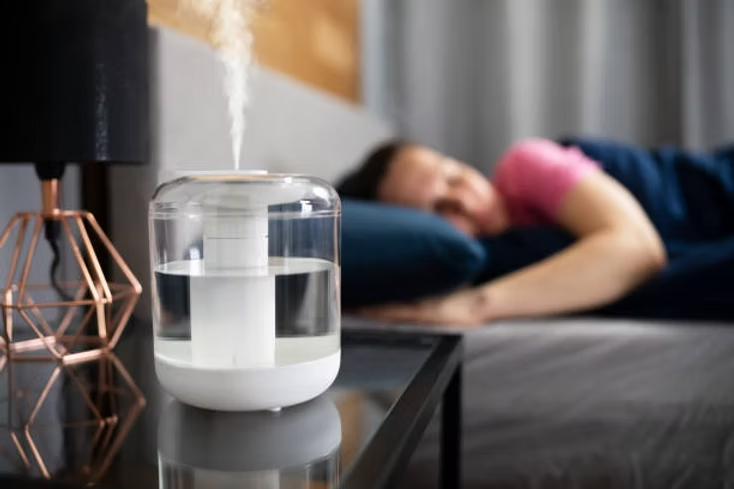The Complete Guide to Properly Cleaning Your Humidifier and Preventing Mold Growth
- admin323029
- Blog

Humidifiers are a great way to maintain comfortable humidity levels in your home, especially during the dry winter months. However, if not cleaned properly and regularly, they can become a breeding ground for harmful mold and bacteria, which can compromise your indoor air quality. This guide will walk you through the steps to clean your humidifier, how often to clean it, and why mold prevention is crucial.
Why Cleaning Your Humidifier Is Important
Humidifiers work by adding moisture to the air, but this moist environment can create an ideal setting for mold and bacteria to grow. If a humidifier is not cleaned properly:
- It can release mold spores and bacteria into the air, leading to respiratory problems, allergies, and other health issues.
- Mold buildup can damage your humidifier, reducing its efficiency and lifespan.
- Dirty humidifiers can emit an unpleasant odor, compromising the comfort of your home.
How to Properly Clean a Humidifier to Prevent Mold
Follow these steps to clean your humidifier and prevent mold growth effectively:
1. Unplug the Humidifier
Always unplug your humidifier before cleaning to ensure safety.
2. Disassemble the Parts
Remove the water tank, filters, and any other detachable parts for thorough cleaning.
3. Empty and Rinse
Drain any leftover water from the humidifier. Rinse the water tank with warm water to remove loose debris.
4. Clean with a Vinegar Solution
- Fill the water tank with a mixture of one part white vinegar to one part water.
- Let it sit for 20–30 minutes to loosen mineral deposits and kill bacteria and mold.
- Use a soft brush to scrub any remaining residue.
5. Disinfect with Hydrogen Peroxide or Bleach
- Mix 1 teaspoon of bleach or 3% hydrogen peroxide per gallon of water.
- Pour the solution into the tank and let it sit for 30 minutes.
- Rinse thoroughly with water to ensure no chemical residue remains.
6. Clean Other Components
- Wipe the exterior and non-water components with a damp cloth.
- Clean the filter according to the manufacturer’s instructions or replace it if necessary.
7. Dry Completely
Allow all parts to air dry completely before reassembling the humidifier to prevent moisture buildup that can lead to mold growth.
How Often Should You Clean Your Humidifier?
The frequency of cleaning depends on how often you use your humidifier:
- Daily: Empty and rinse the water tank to remove leftover water and prevent bacteria buildup.
- Weekly: Deep clean the humidifier using the steps outlined above.
- Monthly: Inspect for mineral buildup and mold, and replace filters or components as needed.
The Dangers of Mold in a Humidifier
If a humidifier is not cleaned regularly, it can spread harmful mold spores into the air, posing health risks such as:
- Respiratory issues like coughing, wheezing, and shortness of breath.
- Allergic reactions, including sneezing, runny nose, and itchy eyes.
- Aggravation of asthma or other respiratory conditions.
By keeping your humidifier clean, you can avoid these issues and maintain a healthy indoor environment.
FAQs About Cleaning a Humidifier
Q: How do I know if my humidifier has mold?A: Common signs include a musty smell, visible black or green spots in the tank or components, and worsening air quality or health symptoms when the humidifier is in use.
Q: Can I use tap water in my humidifier?A: Tap water contains minerals that can lead to deposits and encourage mold growth. Use distilled or demineralized water to reduce this risk.
Q: What happens if I forget to clean my humidifier?A: A neglected humidifier can harbor mold and bacteria, which may spread into the air, affecting your health and indoor air quality.
Q: Can I use vinegar alone to clean my humidifier?A: Vinegar is excellent for removing mineral deposits and mild bacteria, but for thorough disinfection, follow up with hydrogen peroxide or a bleach solution.
Q: How often should I replace the filter in my humidifier?A: Replace the filter every 1–3 months, depending on the manufacturer’s recommendations and usage frequency.
Final Thoughts
Properly cleaning your humidifier is essential for preventing mold growth and maintaining a healthy indoor environment. By incorporating regular maintenance and cleaning into your routine, you can enjoy the benefits of a humidifier without the risks.
If you’re concerned about air quality or suspect mold in your home, contact Elite Inspections for professional mold inspections and testing services.
Are you worried about the cleanliness of your space?
Let us help you! Cleaning services are our specialty, and we offer a complete range of cleaning and maintenance services. Get a free estimate!



